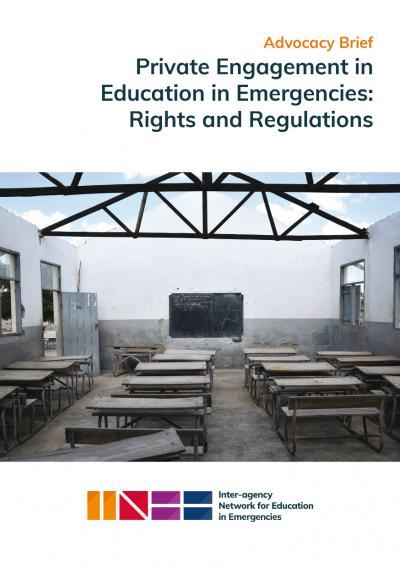Advocacy
In the light of events associated with the COVID-19 pandemic in 2020 it is even more essential that we do not forget the additional barriers faced by children and youth affected by crises. If we are to meet SDG4 and the wider 2030 agenda, more must be done to increase funding, remove policy barriers and improve education programmes for crisis-affected children. Governments, donors and their partners need to take targeted collective action to respect, protect and fulfil the right to quality education for children and youth affected by conflict and crisis.
To see meaningful change in the lives and learning of crisis-affected children and youth, we must see a catalytic shift in approach and ambition.
Key Messages
-
Even prior to the COVID-19 pandemic, 127 million primary and secondary school-age children and young people living in crisis-affected countries were out of school in 2019, or almost one-half the global out-of-school population.
- Girls are more likely than boys to be out of school in crisis contexts. In 2019, the out-of-school rate for children and young people of primary and secondary school age living in countries affected by crisis was 31 percent for girls and 27 percent for boys.
- Although education is formally recognised as part of a humanitarian response, this recognition has not yet translated into sufficient financing. This means that millions of children in crisis contexts continue to be denied their right to quality education (Source).
- Financing for EiE is skewed toward a few high-profile emergencies leaving many children and young people living in ‘forgotten crises’, with little hope of quality education. Despite increased visibility of education as a core response in an emergency, especially since the establishment of Education Cannot Wait in 2016, the share of humanitarian aid remains at a mere 2.9 percent in 2021.
Why Education in Emergencies?
-
Education is a human right and a crucial investment. It holds the key to a better life for children and youth worldwide: a life with less poverty, better health and self-reliance. It holds the key to a better society; education, particularly girls’ education, is one of the most powerful tools for creating economic growth, decreasing the likelihood of conflict, fostering resilience and impacting future generations with wide-reaching economic and social benefits.
-
Yet wars and disasters deny generations the right to education. Today’s crises are long and protracted, resulting in extensive periods of displacement and disruption; subsequently, refugees are five times less likely to attend school than other children and youth. Moreover, in the majority of conflicts around the world, schools, universities, students, and teachers are targeted for attack as a tactic of war, and education institutions are used for military purposes putting them at risk of attack by opposing forces.
-
In emergencies, quality education enables children and youth to survive and thrive at times of great uncertainty and vulnerability. Quality education bolsters children and youth’s resilience amidst adversity, supports their socio-emotional and cognitive development, provides a safe space that can act as a platform for other life-saving services, and protects them from the violence, abuse, and exploitation that rise precipitously during emergencies. In the long term, education can break the cycle of violence and conflict and promote peace and reconciliation, helping children and youth contribute to building better futures, opening opportunities, and teaching tolerance and conflict resolution.
-
Education is one of the first services demanded by families and children and young people during crises—and yet it is all too often the first service suspended and one of the last services resumed. According to 16 studies covering 17 different emergencies, 99% of children and youth in crisis situations identified education as a priority [Save the Children, 2015].There is a clear need to bring actors and resources together to deliver a more ambitious, joined-up response in line with national policies and plans in emergency contexts and beyond.
-
Investing in education is proven to improve the lives of children, even in the poorest countries in the world. According to Save the Children's Global Childhood Report 2019, data reveals that improvements in children's education and increases in enrollment coincided with decreases in child marriages, child labor, adolescent births and child homicides. (Source)






